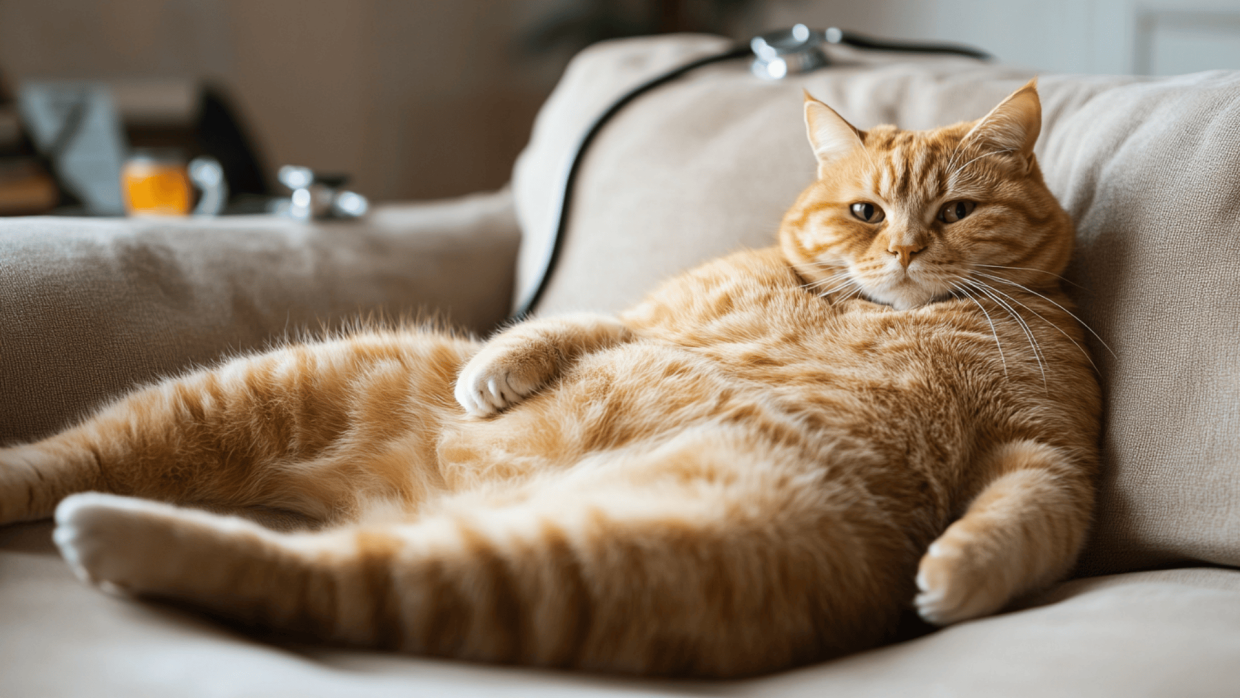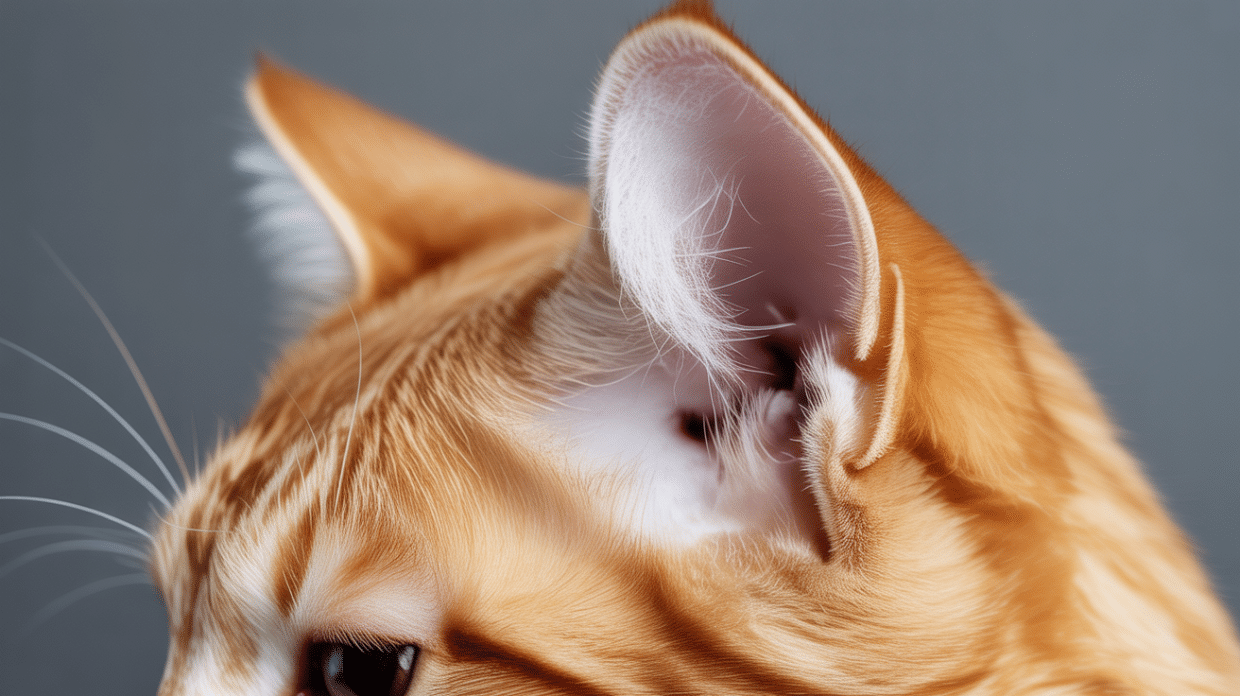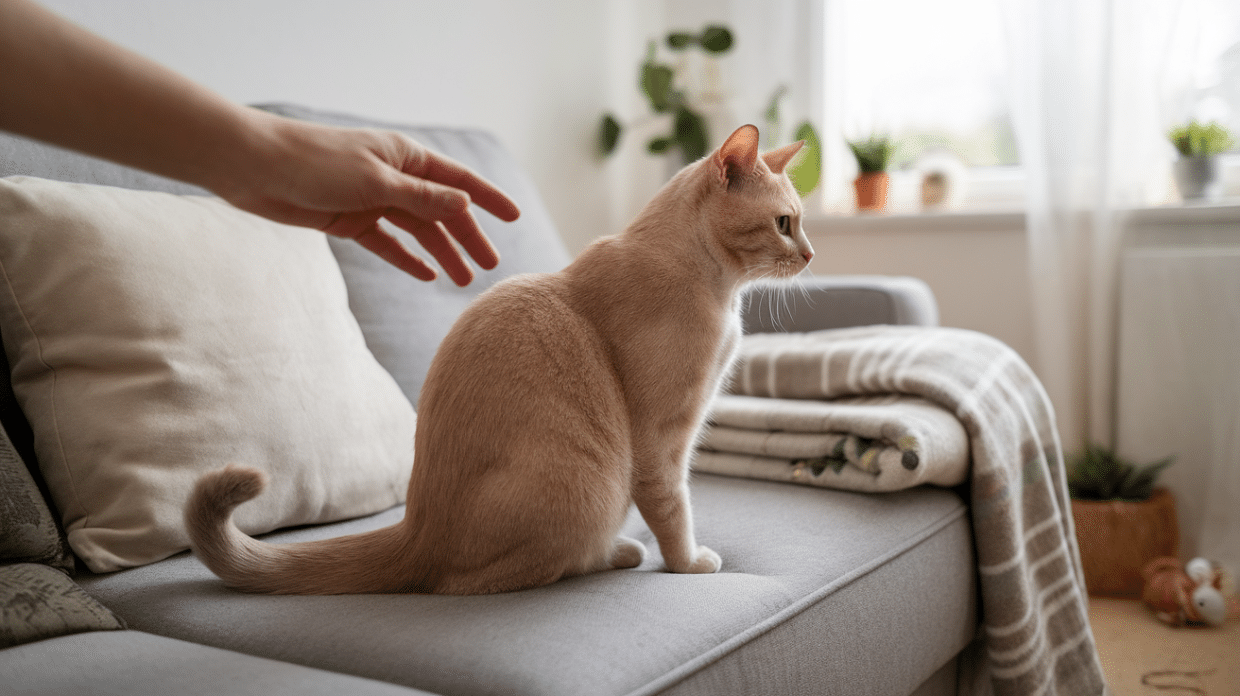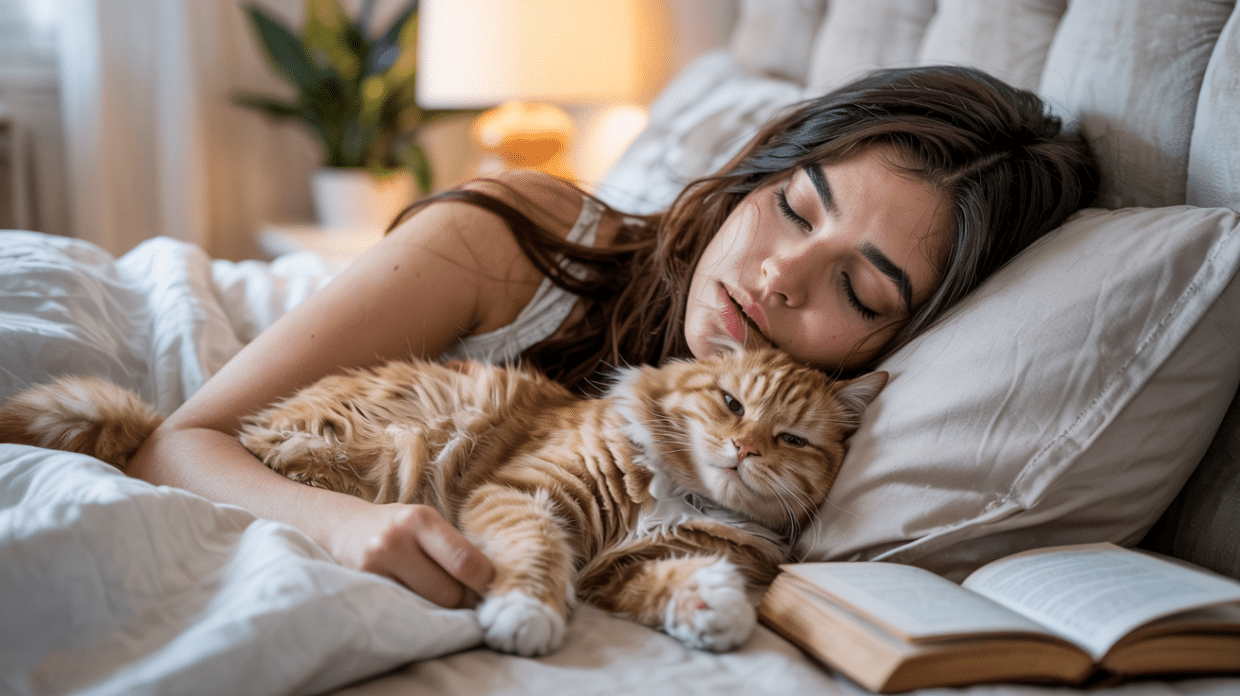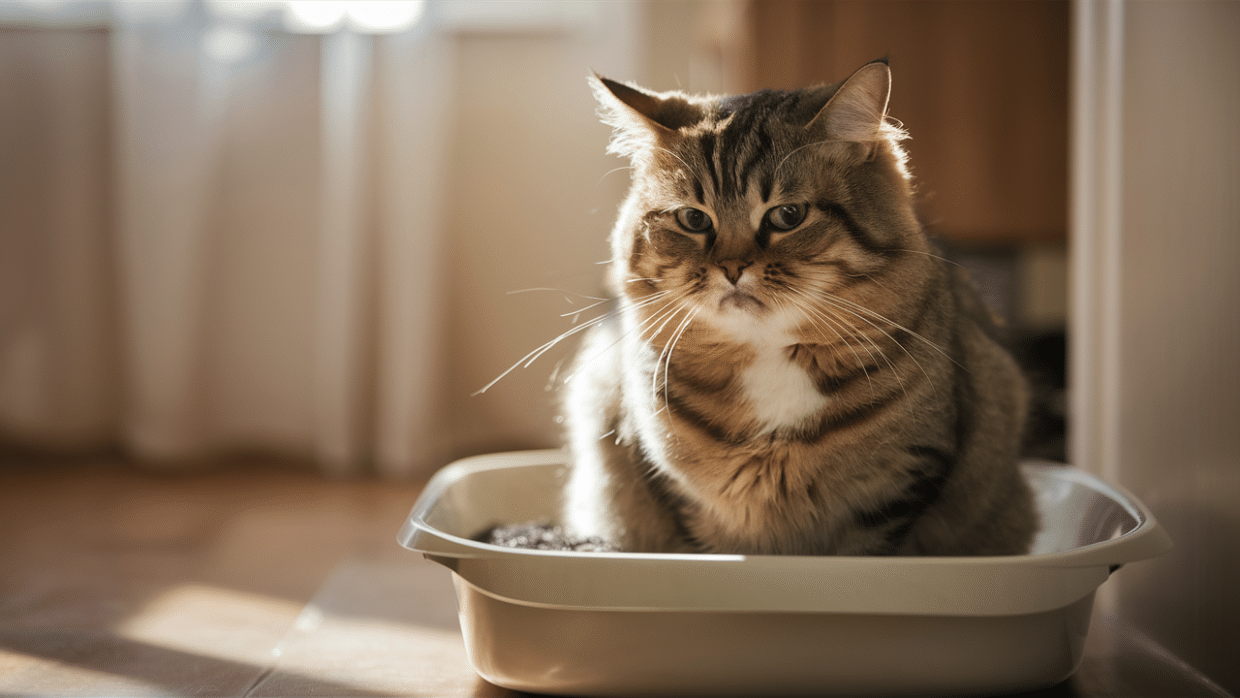Does your cat’s belly suddenly look bigger than usual? It might seem harmless at first, but a swollen belly in cats can be a sign of something serious.
You might be wondering if it’s just weight gain, a full stomach, or something that needs urgent vet care.
This blog will help you understand exactly what a cat’s swollen belly could mean. We’ll go over common causes, symptoms to watch for, when to see the vet, and what to expect during a checkup.
By the end, you’ll know what’s normal, what’s not, and what steps to take. Could your cat’s swollen belly be more than just a little bloat? Let’s find out.
What Does a Swollen Belly in Cats Mean?
A swollen belly in cats is called abdominal distension. It means the stomach area looks bigger or puffier than normal.
This can happen for many reasons, and not all of them are serious. But some do need quick vet care.
Here’s how to tell the difference:
- Bloat: The belly feels tight or hard. This may come with discomfort, gas, or sudden changes in behavior.
- Fat: The belly is soft and squishy. This happens over time and usually doesn’t cause pain.
- Fluid retention: The belly looks round and full. It may feel a bit firm and can signal a health problem inside the body.
Noticing how the belly looks and feels can help you figure out what’s going on.
Common Causes of a Swollen Belly in Cats
A swollen belly can happen for different reasons, some more serious than others. Below are the most common causes and how they might show up in your cat.
1. Parasites (Especially Roundworms)
Roundworms are one of the top causes of belly swelling in kittens. These worms live in the intestines and make the stomach look large and tight.
Watch for signs like:
- A pot-bellied look
- Diarrhea or vomiting
- Dull coat
- Low energy
Prevention tips:
- Keep your cat on a regular deworming schedule
- Clean the litter box daily
- Don’t let your cat hunt or eat raw meat
2. Fluid Buildup (Ascites)
This happens when fluid collects inside the belly. It’s not a disease itself, but a symptom of other problems like:
- Liver disease
- Kidney failure
- Heart issues
If your cat’s belly feels round and firm and they seem weak or have trouble breathing, see a vet right away.
3. Organ Enlargement
Sometimes an organ like the liver, spleen, or kidneys swells due to infection, inflammation, or disease.
A vet can find this by:
- Feeling the belly during an exam
- Running tests like X-rays or an ultrasound
This type of swelling usually comes with other symptoms like loss of appetite or vomiting.
4. Obesity vs. Bloating
It’s easy to mix up fat with bloating, but they feel different.
Obesity:
- Belly is soft and even all over
- Grows slowly over time
- No sudden behavior changes
Bloating:
- The belly may feel tight or uneven
- Can appear quickly
- It might come with pain or other symptoms
5. Pregnancy
In an unspayed female cat, a swollen belly might mean kittens are on the way.
Signs of pregnancy include:
- Nipples turning pink and swollen
- More hunger or sleepiness
- The belly growing week by week
Pregnancy usually becomes obvious around the 3–4 week mark.
6. Feline Infectious Peritonitis (FIP)
FIP is a serious viral disease that can cause fluid to build up in the belly.
It may also cause:
- A fever that doesn’t go away
- Weight loss
- Tiredness and lack of appetite
FIP is often fatal, so if you suspect it, get vet care fast.
7. Constipation or Overeating
Cats that eat too fast or have trouble pooping can get a temporarily swollen belly.
Look for:
- Straining in the litter box
- Less poop than usual
- Swelling that goes away after a few hours
If the swelling sticks around or comes back often, talk to your vet.
8. Tumors or Cancer
Masses in the belly can make it look bigger, especially in older cats.
Warning signs:
- A lump that grows over time
- Weight loss
- Weakness or hiding behavior
Some tumors are treatable, but early detection is key.
Symptoms that Require Immediate Veterinary Attention
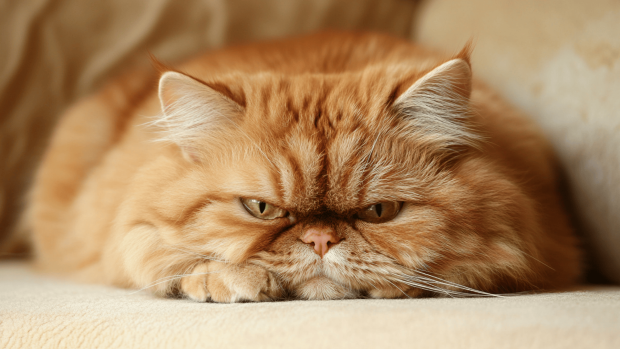
Not all swollen bellies mean an emergency, but some signs should never be ignored. If your cat seems sick or uncomfortable along with the swelling, it’s time to call the vet.
One red flag is if your cat is acting very tired or weak. A sudden drop in energy is often a sign that something more serious is going on.
Vomiting or refusing to eat for more than a day is another concern. These symptoms, combined with a swollen belly, could point to a deeper health issue.
Pay attention to how your cat is breathing. Fast, heavy, or open-mouth breathing is not normal and needs urgent care.
Fever or shaking could mean an infection or inflammation, or even an upper respiratory issue. If your cat is sneezing or acting stuffy, here’s how to treat a cat with a cold.
If your cat is straining in the litter box, can’t go at all, or seems in pain while trying, this also calls for quick attention from a vet.
To help you figure out what’s mild and what’s serious, use the chart below.
Swollen Belly Symptom Chart
| Symptom | Mild/Monitor at Home | Severe/Call the Vet |
|---|---|---|
| Belly appearance | Soft, slow change | Tight, hard, sudden swelling |
| Energy level | Slightly less playful | Very tired, hiding, not moving |
| Appetite | Eating less than usual | Not eating at all |
| Breathing | Normal | Heavy, fast, or open-mouth breathing |
| Litter box habits | Skipping a poop or two | Straining, crying, or no output at all |
| Vomiting | Once or twice, no other signs | Frequent, or mixed with other symptoms |
| Weight | Slowly gaining | Sudden loss despite belly swelling |
| Belly pain | None or mild | Hissing, growling, or avoiding touch |
If your cat shows any of the signs in the severe column, don’t wait; get vet help as soon as possible. Acting fast can make a big difference.
What to Expect at the Vet
When you take your cat to the vet for a swollen belly, the goal is to find out what’s causing it. The vet will start with a physical exam and then run some tests if needed.
Here are some common diagnostic tools they may use:
-
Bloodwork checks for infections, organ problems, and signs of disease
-
X-ray shows blockages, tumors, or fluid buildup
-
Ultrasound gives a clear view of the organs and checks for internal issues
-
Urine or stool tests help spot parasites or urinary problems
Cost estimates can vary by location, but here’s a rough range:
| Medical Service | Estimated Cost |
|---|---|
| Basic checkup | $50 – $100 |
| Blood tests | $100 – $200 |
| X-ray | $100 – $250 |
| Ultrasound | $250 – $500 |
To narrow things down, the vet will look at your cat’s symptoms, medical history, and test results. This step-by-step approach helps them figure out if the cause is mild, serious, or somewhere in between.
Can You Treat a Swollen Belly at Home?
In some cases, home care is okay, but only if your cat is acting normal and doesn’t show any signs of pain or distress.
You may be able to manage at home if:
- The swelling comes after eating
- Your cat is active, playful, and eating normally
- There are no other symptoms
But if your cat seems tired, stops eating, vomits, or shows signs of pain, don’t wait. These can be signs of something serious that needs vet care right away.
If parasites are the cause, your vet may recommend a dewormer you can give at home. Never give a dewormer without checking with your vet first; giving the wrong dose or type can be harmful.
When in doubt, it’s always safer to call the vet and ask.
Special Situations and Cosiderations for Swollen Belly
Some cats are more likely to have belly swelling due to their age or condition. Here are a few common cases and what to know about each one.
Kittens with Bloated Bellies
It’s very common for kittens to have round bellies, especially if they have worms. Since their immune systems are still developing, they’re more at risk.
Deworming tips for kittens:
- First dose at 2–3 weeks old
- Then every 2 weeks until 8–12 weeks
- Monthly treatments after that, if needed
Skipping or delaying deworming can lead to serious health issues. Always use a vet-approved product.
Elderly Cats and Belly Swelling
Senior cats are more likely to have long-term illnesses that cause swelling. Common issues include:
- Cancer: tumors in the belly or organs
- Fluid retention: from heart, kidney, or liver problems
- Inflammation: from chronic diseases
If an older cat has a swollen belly and is losing weight or energy, get them checked out as soon as possible.
Swollen Belly After Eating
Sometimes a belly looks bigger right after a meal. This is usually normal, especially in cats that eat fast.
But it could be a problem if:
- The belly gets hard or tight
- Your cat looks uncomfortable
- The swelling doesn’t go down after a few hours
If it keeps happening, talk to your vet about changing the feeding routine or checking for food intolerance
How to Prevent Belly Swelling in Cats
You can’t prevent every cause, but good care goes a long way in keeping your cat healthy.
Start with a balanced diet. Feed the right amount based on your cat’s weight and age.
Avoid giving table scraps or high-fat treats, as these can lead to weight gain and digestion problems. Stick to high-quality cat food with clear ingredients that support your cat’s health.
Routine vet care also plays a big role. Make sure to schedule yearly checkups to catch problems early.
Keep up with vaccines and parasite treatments, and pay attention to any changes in your cat’s weight or eating habits.
Parasite prevention is another key step. Use vet-approved dewormers when needed and keep the litter box clean.
Try to limit your cat’s outdoor time, especially if they’re very young or older, since they’re more at risk for infections.
Taking small steps every day can help your cat avoid belly issues and stay happy and healthy.
Conclusion
A cat’s swollen belly can mean many things, from something simple like overeating to a serious health issue.
Now you know the signs to watch for, when to get vet help, and how to care for your cat at home if it’s safe to do so.
Keep an eye on your cat’s habits, feel for changes, and don’t ignore warning signs. Your quick action can make a big difference.
One last tip: trust your gut. If something feels off, it’s always okay to call your vet.
Want to learn more about your cat’s health and behavior? Check out our other blogs for helpful tips and easy guides to keep your cat happy and healthy.

